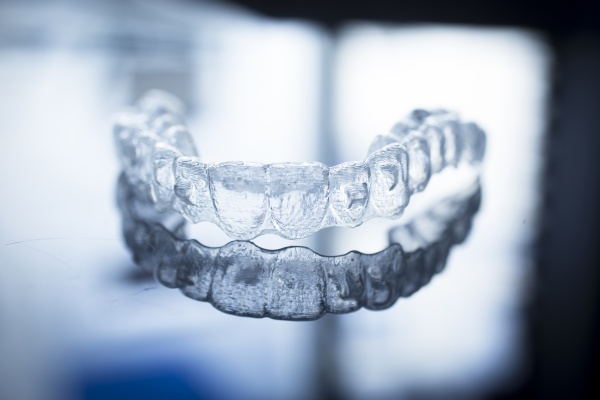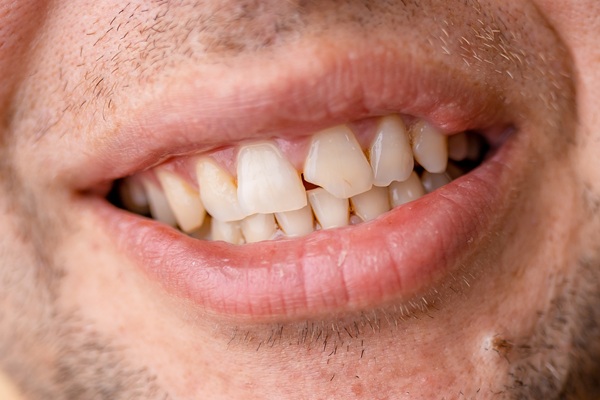Understanding the Process Behind ClearCorrect®

ClearCorrect aligners are clear plastic aligners that are used to straighten teeth as an alternative to traditional braces. Like Invisalign, another clear aligner brand, ClearCorrect uses a tray of custom-made, removable clear aligners to straighten the teeth.
All you need to know about ClearCorrect aligners
When a patient goes to see their dentist for their ClearCorrect consultation, the dentist will make an impression and take X-rays of their teeth to determine the severity of their problem. They will then send the impression and X-rays, along with the patient’s dental records, to a dental laboratory where a 3D model of the patient’s teeth is created. The dentist will then map out a complete treatment plan showing the gradual realignment that will reposition the teeth from their current position to where they will be when the treatment is complete.
How do ClearCorrect aligners work?
ClearCorrect aligner treatment involves four phases of therapy. Each of the phases requires using a new set of aligners that are worn for three weeks. After wearing each aligner set, the results will be noticeable as the teeth begin slowly adjusting and aligning to the desired positions.
The patient will be required to make periodic checkups with their dentist so their progress can be evaluated and the patient can be given the next set of aligners. This sequence will continue until the teeth have reached the desired positions.
How long does treatment last?
The treatment time for each patient depends on the severity of their condition, but it generally takes anywhere from one to two years.
Will wearing the aligners hurt?
Most patients experience some sensitivity or tenderness for the first few days of wearing their new aligners. However, the more they wear the aligner the more comfortable they become. In some cases, sores and irritation are possible but really do not occur that often.
ClearCorrect aligners can also temporarily affect the patient’s speech. Most people adapt quickly to wearing the aligners and it is rare that their speech will be impaired for an extended period of time.
How do I keep the aligners clean?
ClearCorrect aligners are removable, which makes them easy to clean. They can be cleaned by rinsing them with warm water and soap before putting them back in the mouth. To avoid tooth decay, periodontal disease, staining the teeth or inflammation of the gums, patients are advised to practice proper oral hygiene while undergoing treatment.
How long do I have to wear the aligners?
ClearCorrect aligners should be worn for at least 22 hours a day. They should only be removed when the patient wants to eat and brush their teeth. If they are not worn for 22 hours every day, the corrective process can be halted and begin to reverse within a few hours.
Do I have to wear a retainer after treatment is complete?
Yes, patients will have to wear retainers after their treatment is complete to prevent the teeth from moving back into their previous positions. The length of time a patient has to wear their retainer will be determined by their dentist.
Conclusion
ClearCorrect aligners are a great alternative when it comes to straightening your teeth discreetly. If you have crooked teeth or bite problems, ask your dentist if you can fix the problem with ClearCorrect aligners.
Request an appointment here: https://www.lilburnfamilydentistry.com or call Lilburn Family Dentistry at (770) 800-0178 for an appointment in our Lilburn office.
Check out what others are saying about our services on Yelp: Read our Yelp reviews.
Recent Posts
Dental crowns are restorations that can address a range of dental issues, from severely damaged teeth to protecting a tooth after a root canal. They help preserve oral health and enhance a smile's appearance. In addition to being versatile, they are available in different materials, which can be helpful for individuals who want options.Dental crowns…
A broken tooth is a common dental issue that can happen for many reasons, such as accidents, biting into something hard, or untreated tooth decay. Whether a dentist can save a broken tooth or needs to remove it depends on how severe the damage is and how quickly patients seek treatment. While modern dental techniques…
Dental crowns are a popular dental restoration, effectively preserving and enhancing the function of damaged or weakened teeth. These custom-made caps are designed to fit over the existing tooth, providing both structural support and improvements in your smile's appearance. However, not all dental crowns are created equal. The type of dental crown you choose can…
Your dentist can help determine if you need dental crowns. There are many reasons for getting these restorations. The main goal is always to restore the tooth and enhance its functions. Here are the signs you may need dental crowns soon.Losing at least one tooth can cause more dental problems. It can lead to dental…


